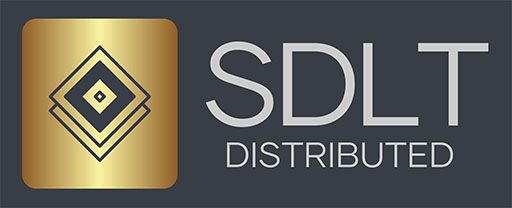
Decentralized Ad Exchanges Are What Advertisers and Publishers Need Today – CCN.com
Key Takeaways
- Blockchain can transform digital advertising by increasing transparency, reducing fraud, and eliminating excessive intermediary fees.
- On-chain solutions empower publishers, advertisers, and users alike, fostering a fairer and more efficient ad ecosystem.
- The digital advertising industry must embrace blockchain to rebuild trust, streamline processes, and unlock greater stakeholder value.
In today’s digital advertising space, trust has become a scarce commodity. The recent antitrust lawsuit against Google highlights the deep-rooted issues plaguing the industry.
Accusations of hidden agreements and opaque transactions have shaken confidence in programmatic advertising, revealing a system where transparency is more of an exception than a rule.
The current state of affairs benefits a select few at the expense of many. Advertisers grapple with a lack of clarity on ad spending, often losing up to 47% of their budgets to intermediary fees.
Publishers find themselves “eating last,” with their inventory sold significantly below fair value, forcing them into questionable practices to maintain margins. Users, inundated with irrelevant ads, see little value in sharing their data, leading to a surge in ad blocker usage.
Brands, meanwhile, face exorbitant fees and fall victim to fraud, unable to trace transactions in a convoluted supply chain.
Integrating blockchain into advertising can address these challenges head-on and provide tangible benefits to all participants in the supply chain.
Web3 Advertising and the Evolution of Ad Tech
Publishers stand to gain immensely by adopting on-chain solutions. Blockchain can utilize existing standards and integrate them with their current tech stacks. This integration both increases revenue and offers unparalleled transparency on fees deducted during programmatic ad auctions.
Publishers can finally receive fair compensation for their inventory and eliminate the need to adopt unsavory practices to stay afloat.
Users, in turn, can reclaim control over their online experience. Blockchain enables them to “yield farm the internet,” earning rewards through operating nodes that validate network transactions or pooling liquidity and staking LP tokens.
Such a participatory model transforms users from passive recipients into active stakeholders and incentivizes them to share data responsibly and engage more deeply with content.
Finally, customers, in this context, the advertisers, benefit from reduced costs and commissions. Blockchain streamlines the advertising process, eliminating unnecessary intermediaries and notarising every transaction via Distributed Ledger Technology (DLT).
This reduction in counterparties simplifies the supply chain and lowers the number of agencies and contractors involved. The result is a more efficient system where marketing budgets are allocated effectively, and every pound spent is accounted for.
Blockchain Solutions Eliminate Digital Ad Fraud
The digital advertising industry, valued at over $600 billion , has long been marred by a lack of transparency and audibility.
Fraudulent activities siphon off substantial portions of marketing budgets, and brands are often unaware of where their money is going. Blockchain offers a solution: It independently validates and records every transaction on a transparent and immutable ledger.
This ledger provides a single source of truth accessible to all parties involved. Advertisers can track their spending in real time to ensure funds reach their intended destinations. Publishers receive verifiable proof of ad placements and payments, building trust with advertisers.
In turn, users benefit from a more relevant and less intrusive advertising experience, as their engagement can be accurately measured and rewarded.
Roadblocks to Web3 Adoption
Despite the clear advantages, many large Web2 brands remain cautious about embracing Web3 solutions. Concerns over scalability, security, and unfamiliarity with the technology hinder widespread adoption.
The initial hesitation is understandable, but the long-term benefits far outweigh the challenges.
Decentralized ad exchanges are blockchain-based programmatic platforms that advertisers and publishers need to buy and sell inventory transparently and efficiently.
The tokenization of digital ads becomes a solution to addressing the challenges of transparency and trust in the programmatic advertising market. This is because every transaction on the blockchain is seen, validated by a decentralized network, and recorded on the ads exploring dashboard.
Streamlining the supply chain between buyers and sellers eliminates unnecessary intermediaries and fees. Decentralized networks provide detailed insights into ad tracking, placement, revenue, fees, and impressions. This secure and transparent environment empowers all stakeholders.
Industry Must Act
I think the digital advertising industry is now at a crossroads. The traditional model, fraught with inefficiencies and mistrust, is no longer sustainable. Blockchain technology offers a viable path forward, promising transparency, efficiency, and fairness for all parties involved.
The question is, who will lead this transformation and harness the power of blockchain to restore value for advertisers, publishers, and consumers?
It’s time for the industry to embrace this change, shedding outdated practices in favor of a system that benefits everyone. Adopting on-chain solutions is the key to rebuilding trust, eliminating fraud, and creating a more accountable and prosperous digital advertising ecosystem.
Disclaimer: The views, thoughts, and opinions expressed in the article belong solely to the author, and not necessarily to CCN, its management, employees, or affiliates. This content is for informational purposes only and should not be considered professional advice.
